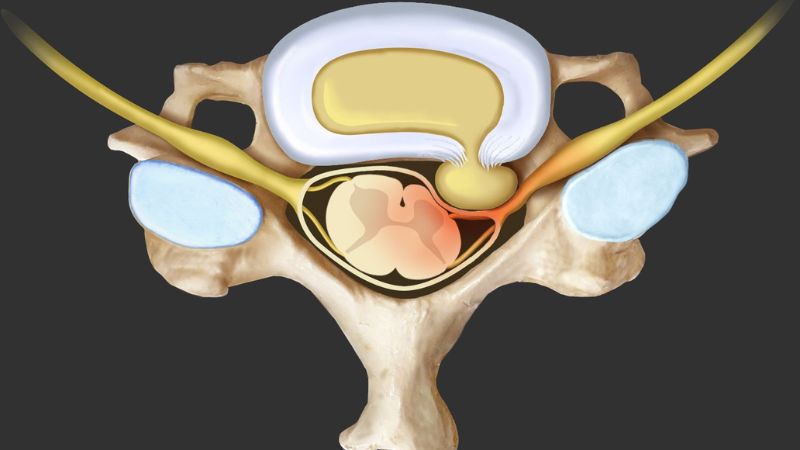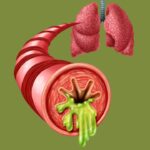Herniated disc disease is a common musculoskeletal condition that significantly affects quality of life. It occurs when the inner gel-like core of the intervertebral disc (nucleus pulposus) protrudes through a tear in the outer fibrous ring (annulus fibrosus), compressing nearby nerve roots or the spinal cord. This pressure can result in pain, numbness, and reduced mobility. While often associated with aging, it is increasingly seen in younger populations due to poor posture and sedentary lifestyles. Understanding this condition is crucial for early detection, prevention, and effective treatment. Below are five important facts everyone should know about disc herniation.
1. What Is a Herniated Disc?
The intervertebral disc is a soft tissue structure situated between spinal vertebrae, functioning as a shock absorber and allowing flexibility in the spine. It comprises a central nucleus pulposus surrounded by a tough annulus fibrosus.
When the disc degenerates or suffers trauma, the annulus may tear, allowing the nucleus to herniate and compress surrounding nerves. This condition is referred to as herniated disc disease. The herniated material may irritate or press on nerve roots, resulting in localized or radiating pain, as well as neurological symptoms.
Common locations:
– Lumbar spine (lower back): Often causes pain radiating down the legs (sciatica).
– Cervical spine (neck): May result in pain extending to the shoulders, arms, or fingers.
Disc herniation is also categorized by severity—bulging disc, protrusion, extrusion, or sequestration (disc fragment detached). Each type presents varying degrees of symptoms and risk.

When the annulus fibrosus is torn or damaged, the disc nucleus may protrude and compress the spinal cord or nerves.
2. Common Causes of Herniated Disc Disease
2.1 Age-related degeneration
Natural aging leads to the loss of water content in discs, making them less elastic and more susceptible to injury. Disc wear typically becomes noticeable after the age of 30, and even minor stress or improper movement can trigger herniation.
2.2 Mechanical strain and poor lifestyle habits
Incorrect posture, improper lifting techniques, prolonged sitting, or lack of movement put strain on the spine, particularly the lumbar area. In addition, obesity, smoking, and a sedentary lifestyle impair blood flow and disc nourishment, accelerating disc degeneration and increasing herniation risk.
3. Early Warning Signs
3.1 Common symptoms
The hallmark symptom of herniated disc disease is localized or radiating pain, depending on the affected disc level. Pain may travel along the nerve path, often accompanied by numbness, tingling, or weakness in the arms or legs. In severe cases, it may cause muscle atrophy, loss of reflexes, or even bowel and bladder dysfunction if spinal cord compression occurs.
3.2 Often mistaken symptoms
Initially, symptoms such as neck or back stiffness may be dismissed as fatigue. However, persistent discomfort, especially when accompanied by neurological signs (e.g., tingling, muscle weakness), should prompt medical evaluation to rule out a herniated disc.

Localized pain, radiating nerve pain, and numbness in the arms or legs are common signs of the condition.
4. Potential Complications If Left Untreated
4.1 Nerve damage
Prolonged nerve compression can lead to irreversible nerve damage, resulting in chronic pain, sensory loss, or paralysis. One of the most serious complications is cauda equina syndrome, a medical emergency characterized by loss of bladder or bowel control.
4.2 Long-term disability
Chronic pain impacts mental health, sleep quality, and overall functionality. Patients may limit movement to avoid pain, which can lead to muscle atrophy and joint stiffness. Misalignment of the spinal column may develop, making future treatment more complex and less effective.
5. Effective Treatments and Prevention Strategies
5.1 Treatment options
Treatment for disc herniation depends on severity. Mild to moderate cases often respond well to conservative treatments such as pain relievers, anti-inflammatory medication, muscle relaxants, and physical therapy.
For persistent or severe cases, surgical options may be recommended to decompress the affected nerve and stabilize the spine. Advances in minimally invasive spine surgery have improved recovery times and reduced complication risks.

Early treatment at a reputable medical facility is essential for effective management of herniated discs.
5.2 Preventive measures
Adopting a healthy lifestyle is key to preventing disc herniation. Maintaining a healthy weight, exercising regularly, and avoiding prolonged sitting are essential. Proper techniques for lifting heavy objects and ergonomic sleeping positions also help protect spinal health.
Herniated discs are no longer a rare condition and can affect anyone who neglects spinal care. Early recognition of symptoms and timely treatment can prevent serious complications. More importantly, long-term prevention through healthy habits remains the most effective way to safeguard spinal well-being








